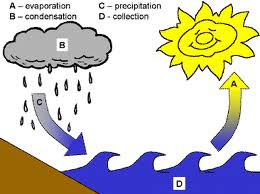 Whatncould be more crucial to the quality of life than plenty of cleannwater?
Whatncould be more crucial to the quality of life than plenty of cleannwater?
n
n
n
n
n
n
n
n
n
n
n
n
 Althoughnabout 70% of the Earth is covered by water, most of it is salty oceannwater. As a matter of fact, 96.5% of Earth’s water is in its oceans!nSome of the rest of Earth’s water is tied up in glaciers and icecaps,nsome is deep down in the ground, and some is vapor high in the sky. Antiny percent of Earth’s water is fresh water in rivers, lakes,nreservoirs, and aquifers. n
Althoughnabout 70% of the Earth is covered by water, most of it is salty oceannwater. As a matter of fact, 96.5% of Earth’s water is in its oceans!nSome of the rest of Earth’s water is tied up in glaciers and icecaps,nsome is deep down in the ground, and some is vapor high in the sky. Antiny percent of Earth’s water is fresh water in rivers, lakes,nreservoirs, and aquifers. nn
n
n
n
n
n
nOfncourse, water isn’t just sitting still. Everyone knows about thenwater cycle: water evaporates from the ocean (and every other waternsource) and as vapor becomes part of the atmosphere; then the vaporncondenses back into liquid or freezes into ice crystals; eventuallynit falls out of the sky as rain or snow or sleet or hail. It eithernpacks up on the ground (as snow or ice), or it runs off of or seepsninto the ground (as water). Some of the rainwater and snowmelt findsnits way into rivers and lakes, and rivers eventually run into thenocean. Water, water everywhere—changing its state from liquid tonvapor to frozen and back again to liquid—changing itsnlocation—sometimes picking up pesticides and industrial ornsanitation waste, picking up minerals, eroding rocks, carrying soil.
nn
n
n
n
n
 Ournhuman bodies are from 60 to 70% water, and some creatures are aboutn90% water (by weight). Here on Earth—and scientists suspectneverywhere—life is dependent on water. Planetary scientists whonhope to find some sort of life on other planets aren’t just on thenlookout for water, they’re looking for liquid water. Thesenscientists point out that the biochemical reactions that sustain lifenneed fluid to occur, because molecules can dissolve into liquid, andnsubstances can move from one place to another in a cell or body.nGetting molecules where they need to go is too hard within a solid.nAnd gas-based (vapor-based) life would go all to pieces because in angas molecules move too much, too quickly.
Ournhuman bodies are from 60 to 70% water, and some creatures are aboutn90% water (by weight). Here on Earth—and scientists suspectneverywhere—life is dependent on water. Planetary scientists whonhope to find some sort of life on other planets aren’t just on thenlookout for water, they’re looking for liquid water. Thesenscientists point out that the biochemical reactions that sustain lifenneed fluid to occur, because molecules can dissolve into liquid, andnsubstances can move from one place to another in a cell or body.nGetting molecules where they need to go is too hard within a solid.nAnd gas-based (vapor-based) life would go all to pieces because in angas molecules move too much, too quickly.n
n
n
n
n
n
n
n
n
n
n
n
n
n
n
n
n
n
n
n
n
n
n
n
n
n
nWesternnauthor Louis L’Amour’s birthday
nn
n
n
n
n
n
n
n
n
n
n






